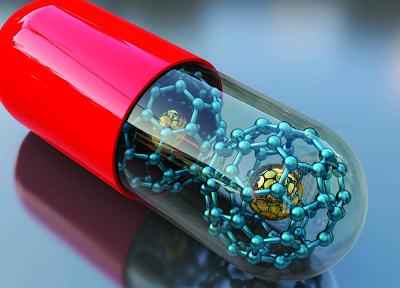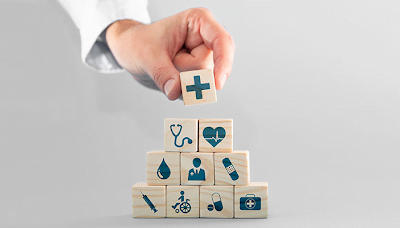Over the last several years, the world has witnessed a flood of technological developments and trends that have the potential to transform many aspects of healthcare. From artificial intelligence to personal genomics, medical technology is fast improving. While many individuals are excited by these advancements, others are concerned.
Though healthcare digitization represents a big step forward, it confronts various challenges, as does any other evolutionary transition. Consumers are concerned about a number of issues, including security and privacy. After a careful and in-depth study, I have come up with a list of disadvantages of technology in healthcare.
How is Technology Used in Healthcare?
The growth of technology has influenced everything from our classrooms to our courtrooms, and the healthcare profession is no exception. The healthcare sector has also been greatly influenced by technology.
From the development of infusion pumps and dialysis machines to the development of antibiotics, heart valves, and MRI scanners, technology continues to propel us ahead and streamline the way we approach medical treatment.
Technology automates and expands tasks that were previously performed by humans, allowing medical professionals to spend their time and resources elsewhere while potentially lowering the total cost of medical treatment. Technology has greatly improved our knowledge of difficult medical and physiological concerns.
Whether it is telehealth, which allows physicians to engage with patients in different places, or the reducing cost of medical and diagnostic imaging, technology is helping to enhance general access to and quality of treatment.
Disadvantages of Technology in Healthcare
Risks of Cybersecurity :
Cybercriminals have long found the healthcare business to be an interesting target. Protected Harbor’s 2021 Healthcare Data Breach Trend Report provides insight into emerging healthcare data breach trends, predictive threats for 2022, and a strategy for increasing information technology (IT) resilience to prevent future healthcare data assaults.

Electronic health records maintained in healthcare institutions are a prominent target for hackers due to the monetary worth of patient health information. The danger of cyberattacks in the healthcare industry is heavily influenced by IoT-connected medical equipment. Cyber attacks will continue to damage the healthcare sector unless providers employ effective network security measures.
High Cost of Treatment :
Computers make things easier and more affordable. In health care, the new technology improves outcomes but raises costs. The expense of some technological improvements is partly to blame for the overall rise in healthcare prices. In reality, new medical technology accounts for 40% to 50% of yearly expense increases.

Laser therapy, coronary artery bypass graft, and robotic surgery, for example, have significantly contributed to the high cost of healthcare technology. These technology-based therapies may be beneficial and result-oriented, but rising medical expenses are a major deterrent for many people.
Incorrect Result of Patients Condition
One downside of health care technology is that sometimes the equipment or technical instruments generate inaccurate findings. It did not always display the most recent findings for the patients to the doctor. Engineers and programmers design and build technological machinery.

Mistakes and issues do occur on occasion, but when it comes to healthcare, these issues cannot be taken lightly as a patient’s life depends on them. It endangers the patient’s life if the inaccurate results are revealed and the doctor makes the incorrect diagnosis. This is one of the most severe consequences of technological use in medicine for patients.
Time-Consuming Recovery
Engineers and programmers design the technology equipment and devices used in hospitals for patient care and testing. If any defects or issues arise. As a result, no one knows how to collect and fix that machine, thus no one can repair it.

It requires the presence of a certain expert who is knowledgeable about the issue, preferably an engineer. This takes a long time to remedy as people wait in line for treatment. If correcting it takes time, individuals undergoing treatment will have to wait, which can be dangerous in emergency situations.
Online Consultation
Doctors now give treatments through the internet, which is known as online consultation. Patients contact them on the internet and suggest a diagnosis. It is not necessary for patients to attend a doctor’s clinic. They can undergo counseling in the privacy of their own homes. During the epidemic, this became significantly relevant.

The doctor makes a diagnosis without doing any tests or reviewing the patient’s medical history. Which might be wrong and perhaps damaging to the patient’s health. Online medical consultations are not suggested unless there is an emergency and the need of the hour. Because your health diagnosis may necessitate performing some tests for treatment in some situations.
Treatment by AI Machines
Although artificial intelligence has advanced significantly in the medical field, human supervision remains critical. For example, surgery robots behave rationally rather than empathetically. Health practitioners may detect critical behavioral insights that might aid in the diagnosis or prevention of medical issues. When adopting an AI system, privacy becomes a concern.

Hospitals, on the other hand, may encounter certain difficulties when attempting to channel data from Apple mobile devices, for example. These legislative and social constraints may limit AI’s capacity to facilitate medical procedures.
While AI may help decrease expenses and reduce clinician stress, it may also make certain positions obsolete. This variable may result in displaced professionals who have invested time and money in healthcare education, posing equality concerns.
Lack of Patient Information
Medical technology suffers from a lack of information as well. To safeguard the privacy of patients, hospitals have rules in place to ensure their safety and privacy. However, due to technological advancements, this rule may be defied and frequently ignored. The patient information stored in the hospital’s computer database may be compromised.

Computer systems can be hacked, and confidential information concerning the patient’s care can be taken and modified. If someone alters the patient’s whole treatment history. As a result, it may pose a risk to the patient’s subsequent therapy.
Conclusion
As technological innovations continue to develop, technology pervades our lives more than ever. Every business has been upended and revolutionized, including the health and medical industries. While every advancement may appear to progress, medical technology has both advantages and downsides. Despite these worries, it is impossible to deny that the benefits of medical technology exceed the drawbacks.
However, the way technology has become the interface between patients and doctors has the potential to pose problems. Human intellect and judgement are unrivalled when it comes to technology replacing humans. Technology can only help people improve healthcare. After all, all of these technologies are powered by the human brain. Medical technology is a vast subject that is expanding by the day. Though it has its drawbacks, it is predicted to benefit the healthcare sector, even better than now, in the coming years.





